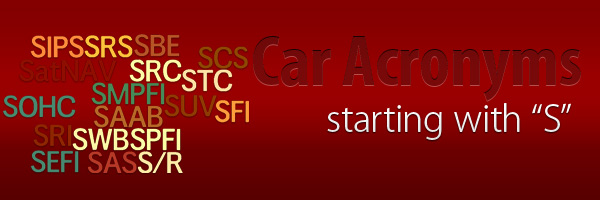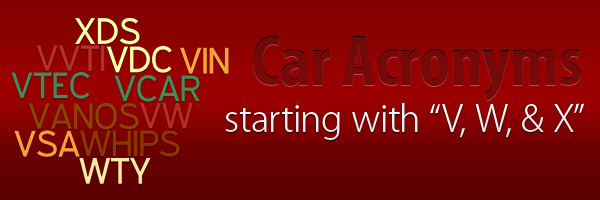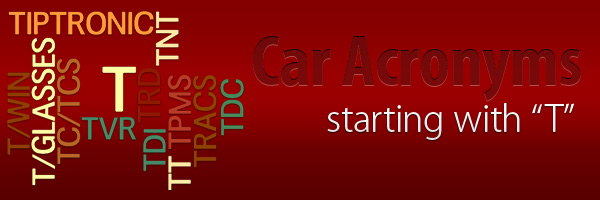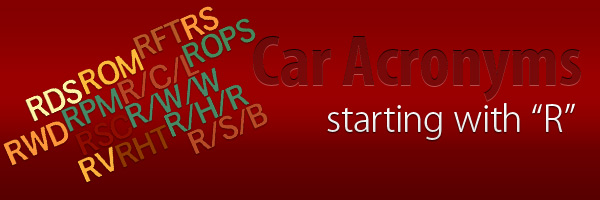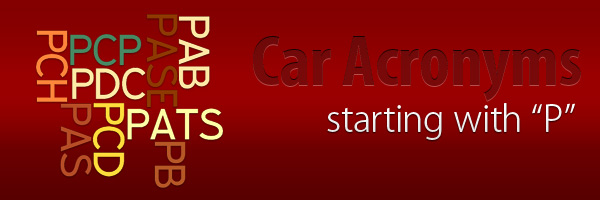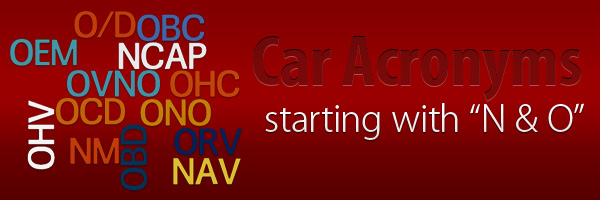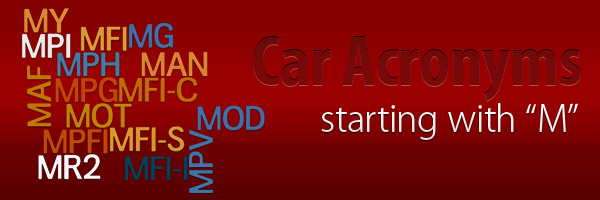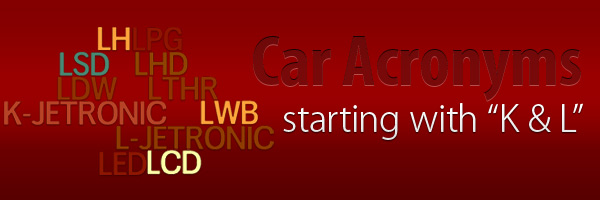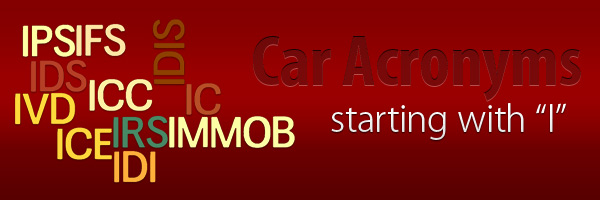SAAB – Svenska Aeroplan Aktiebolag
Founded in 1937, Svenska Aeroplan Aktiebolag is a Swedish aerospace and defense company specializing in aircraft production. Commonly known as the “Saab Group,” this business served as the parent of Saab automobile as well. The primary components of this business include aircraft production, aeronautics, dynamics, and electronic defense.
SAS – Side-Impact Protection
This type of system has been designed to protect occupants from injury due to side collision. Traditionally, seats in an automobile were bolted to the floor of the vehicle. However, with a side-impact protection system, the seats are actually mounted on transverse steel rails. With this alignment, the energy created from a side impact can be dispersed through the whole steel rail, thus minimizing the shock created from impact.
SatNAV – Satellite Navigation
A satellite navigation system is a feature integrated in most automobiles manufactured today. This system is capable of providing the occupant of an automobile with an exact location at a precise time. The satellites that orbit the Earth send signals to a vehicle to provide real-time data of a particular position. Most consider a satellite navigation system as being synonymous with a GPS, or global positioning system.
SBE – Seat-Occupied Detection
Sometimes referred to as a seat-occupant sensor, this technology can calculate the position of an occupant in an automobile. It proves useful in the case of a collision, as the technology is able to regulate the speed and location at which an airbag is released. The seat occupancy sensors use weight as a metric to determine how the airbag should be released.
SCS – Stability Control System
A stability control system, or electronic stability control, is a feature in an automobile that works in conjunction with several other components to ensure safety. Specifically, the technology sends signals to the anti-lock brake and traction control systems to reduce the risk of an automobile accident. The actual sensor is located in the center of the vehicle and proves extremely beneficial when driving in unfavorable conditions (rain, snow, sleet).
SEFI – Sequential Electronic Fuel Injection
A sequential electronic fuel injection system is a multi-port system that operates each individual fuel injection valve. These valves fire just before the cylinder opens as well, allowing for more efficient operation. Traditional mechanical fuel injection systems fired all valves at once regardless of whether or not the cylinder was open. The ultimate benefit of a sequential electronic fuel injection system (as opposed to a mechanical fuel injection system), is less hazardous emissions generated by the vehicle.
SFI – Sequential Fuel Injection
Sequential fuel Injection involves the notion that fuel is displaced in front of valves, before they are open, on a one-by-one basis. These valves ultimately lead to the engine. The benefit of a sequential fuel injection system is increased fuel-efficiency and a longer shelf life for the engine.
SIPS – Side Impact Protection System (Volvo)
The automobile manufactured Volvo has been credited with developing the technology known as the side-impact protection system. This system consists of numerous features that reduce the risk of an injury in a collision. Specifically, a specially-designed passenger cabin, reinforced side doors, and side-impact airbags are among the features that constitute Volvo’s side-impact protection system.
SMPFI – Sequential Multi-Port Fuel Injection
Sequential multi-port fuel injection is a feature in automobiles that is considered to be easier to control compared to electronic fuel injection. With sequential multi-port fuel injection, fuel is displaced right in front of the valves, but the displacement can occur in multiple valves at a given time. The system is easier for manufacturers to install but is usually less fuel-efficient.
SOHC – Single Overhead Cam Shaft
This type of valvetrain configuration places the camshaft of an internal combustion engine above the pistons and combustion chambers. With this system, there are less moving parts compared to an overhead valve pushrod system. The main advantage of a single overhead cam shaft system is more efficient engine operation and design flexibility for manufacturers.
SPFI – Sequential Port Fuel Injection System
A sequential port fuel injection system is a type of multi-port injection system that employs timed injectors. This system is very similar to multi-port fuel injection with the exception that the fuel is triggered on a port-by-port basis. As a result, the engine does not “waste” as much fuel since there isn’t fuel remaining idle at additional ports.
S/R – Sunroof
A sunroof is a feature integrated into today’s sports cars that serves as an opening on the roof of a vehicle. The purpose of a sunroof is to allow for increased lighting in an automobile. Most sunroofs can be operated automatically with the click of a button. For the most part, a sunroof is considered a luxury feature.
SRC – Synchro Rev Control
Synchro Rev Control is a feature in today’s automobiles that was first introduced by Nissan. It enables a driver to enjoy the benefits of manual transmission without having to worry about manually adjusting the clutch pedal and shift lever. Sensors and electronic programming in the engine control unit provide the necessary configurations for the clutch pedal and shift lever. In addition, sensors make the adjustments for the driveshaft and engine speed.
SRI – Short-Ram Intake
Short-ram intake is relevant for automobiles with internal combustion engines. It is a feature of most modern automobiles that allows for increased air volume in an engine bay. While short-ram intake is known to increase engine life, it is believed that the air actually entering the engine bay is at a higher temperature compared to air under original equipment manufacturer intake.
SRS – Safety Restraint System
The safety restraint system of an automobile is the full set of components that minimize the risk of injury due to a collision. Some of the most common components in this system include a seat belt, airbag, and automatic brake system. Additional features, such as rear-view cameras and side-impact protection, have been integrated into more modern vehicles today.
STC – Stability and traction control
This term refers to a system inside an automobile that controls the car in two ways: by using stability control in the instance of skidding or sliding, and by using traction control to reduce wheel spin when accelerating the car. The stability and traction control system is fashioned to prevent slipping when road conditions are compromised by reducing the torque from the engine. In turn, this system facilitates maximum traction and stability on the sides of the vehicle to ensure the highest amount of safety for the driver and passengers. STC functions through the use of a light on the dashboard that flashes to indicate when stability and traction control is being activated.
SUV – Sport utility vehicle
This term refers to a type of passenger vehicle that is equipped with either two-wheel drive or four-wheel drive. An SUV is a broad term that encompasses a vehicle that shares the characteristics of a light truck, minivan, or station wagon style. The interior of a sport utility vehicle has seating for a minimum of four passengers and often offers extra luxury and safety assets.
SWB – Short wheel base
SWB refers to smaller vans or trucks that are generally not much lengthier than a medium sized automobile. Short wheel base means that the distance from front wheel to back wheel is short. This type of van-style vehicle comes with advantages as well as disadvantages: SWB will allow for easier, smoother parking in tight spaces, but will have less loading and carrying space due to the short wheel base.

